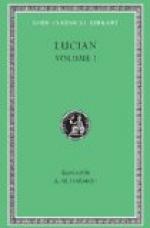The Indians also were disturbed. “Poor Lo” complained of the wanton and senseless killing of the principal means of his sustenance, and when the white man with a laugh ignored these complaints, the Indians got on the war-path, attacked settlements, killed cattle and stole provisions, thus giving rise to conflicts, which devoured not only enormous sums of money, but cost the lives of thousands of people. When the locust plague swept over the fields of Kansas and destroyed the entire crop, the settlers themselves hungered for the buffalo meat of which they had robbed themselves, and vengeance came in more ways than one.
The extermination of the buffalo of the southern range was completed about 1875; to the bisons of the northern range were given a few years’ grace. But the same scenes which were enacted in the South, repeated themselves in the North, and the white barbarians were not satisfied until they had killed the last of the noble game in 1885. When the massacre was nearly over, a few isolated herds were collected and transported to Yellowstone Park, where they have increased to about 400 during the last few years, protected by the hunting laws, which are strictly enforced. With the exception of a very few specimens, tenderly nursed by some cattle raisers in Kansas and Texas, and in some remote parts of British America, these are the last animals of a species, which two decades ago wandered in millions over the vast prairies of the West.
CHAPTER V.
THE MORMONS AND THEIR WIVES.
The Pilgrimage Across the Bad Lands to Utah—Incidents of the March—Success of the New Colony—Religious Persecutions—Murder of an Entire Family—The Curse of Polygamy—An Ideal City—Humors of Bathing in Great Salt Lake.
About half a century ago one of the most remarkable pilgrimages of modern times took place. Across what was then, not inaptly, described by writers as an arid and repulsive desert, there advanced a procession of the most unique and awe-inspiring character. History tells us of bands of crusaders who tramped across Europe in order to rescue the Holy Land from tyrants and invaders. On that occasion, all sorts and conditions of men were represented, from the religious enthusiast, to the ignorant bigot, and from the rich man who was sacrificing his all in the cause that he believed to be right, to the tramp and ne’er-do-well, who had allied himself with that cause for revenue only.
But the distance traversed by the crusaders six or seven hundred years ago was insignificant compared with the distance traversed by the pilgrims to whom we are referring. In addition to this, the country to be crossed presented difficulties of a far more startling and threatening character. There was before them a promised land in the extreme distance, but there intervened a tract of land which seemed as impassable a barrier as the much talked-of, but seldom inspected, Chinese Wall of old. There was a region of desolation and death, extending from the Sierra Nevadas to the border lines of Nebraska, and from the Yellowstone to the Colorado Rivers. A profane writer once suggested that the same Creator could hardly have brought into existence this arid, barren and inhospitable region and the fertile plains and beautiful mountains which surrounded it on all sides.




